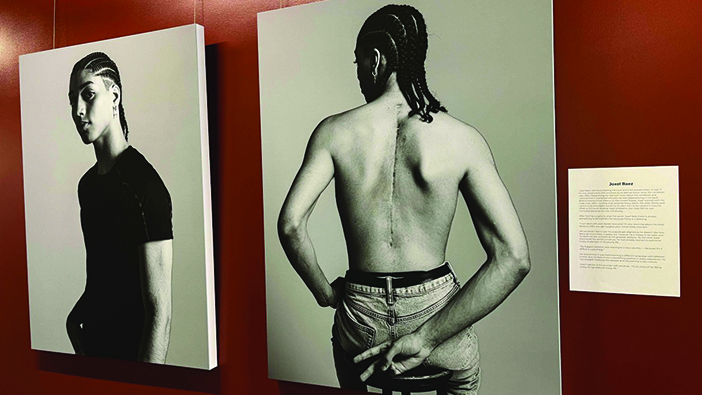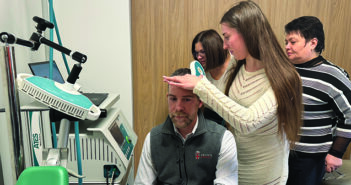Exhibition at medical school offers multi-faceted view of patients with scoliosis.
A new art exhibition at The Warren Alpert Medical School introduces viewers to the many sides of people living with spine disorders.
Visitors are greeted by two black-and-white photographs of each participant—one straight-on traditional portrait, and another of the person’s unclothed back—along with the subject’s name and story.
The exhibition, called “A Curved Reality” and created by the nonprofit Back to Healing in collaboration with a physician-scientist at the Medical School, aims to advance understanding among the public and health care providers alike of the emotional impact of scoliosis.
The idea to display the photographs in the Medical School lobby originated with Bassel Diebo F’23, MD, an assistant professor of orthopaedics and a spine and scoliosis surgeon with Lifespan Orthopedics Institute.
While medical students learn about spinal disorders through studying orthopedics and neurosurgery, Diebo says they might not be fully aware of the effect of a curved back on a patient’s well-being. He hopes the exhibition will inspire students to learn more about spinal disorders and the impact that physicians who care for patients with scoliosis can have on those patients’ lives.
The exhibition’s photos intentionally include patients who have had surgery for scoliosis and those who have not, says Diebo, who has treated four of the participants.
“The way that we physicians can, in a few hours with the help of anesthesia, change the shape of the human body to a shape that is less painful and perhaps more acceptable to the person seeking treatment is important for students to see,” he says. “It reminds us that the point of all of the studying and exams is ultimately to be able to make a tremendous impact on a patient’s quality of life.”




